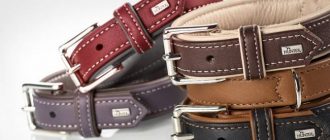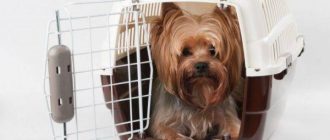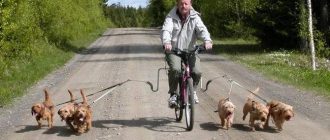It turns out that, despite all the patience and ability to relieve need 2-3 times a day, it is also harmful for dogs to restrain themselves. If the dog does not have the opportunity to timely do their “affairs”, it negatively affects the work of his digestive and urinary system, worsens the overall health of the pet. IN in some cases the dog needs to be emptied in addition to the schedule the bladder or intestines, but most often a well-bred animal is not will bother the owner with his requests. With little puppies all more or less clear, they still do not know how to endure and immediately show – “That’s it, master, you won’t have time to run outside with me, puddles pass. “But, how do you understand what a dog wants to go to the toilet if she doesn’t asks for a walk?
Content
- 1. Puppy Signals: I want to restroom!
- 1.1. Until 4 months you should not expect from a baby “consciousness”
- 1.2. Up to 4 months, it makes sense to equip the pet “home restroom”
- 1.3. Do not wait – you need to act!
- 1.4. First walks – mode required
- 1.5. When to expect process stabilization
- 2. Adult pet toilet – what are the problems fear
- 3. Special signals make the task easier
Puppy Signals: I want to restroom!
Contents
In most cases, the dog’s intentions are understandable, and even inexperienced owner can decrypt the actions of his four-legged friend. It’s enough to have observation and a share of intuition. But if the owner cannot understand when his dog wants to go to the toilet, and the number of “piles” and “puddles” constantly increasing, such a problem definitely requires solutions. 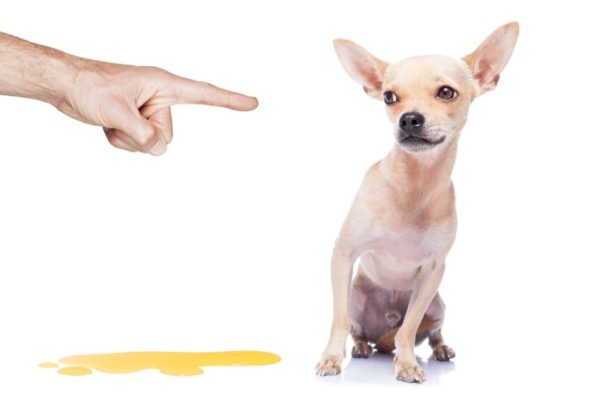
If the constant cleaning of “surprises” and wiping puddles is tired, and the owner is increasingly angry at his pet, it is worth remembering about theoretical background
Until 4 months you should not expect from the baby “consciousness”
At this age, puppies are not able to control the urge, and this applies to the bladder and intestines. If the doggie focused and can understand what he wants in a big way or small, he manages to run to the diaper, tray, rags or will begin to ask.
But if the “urge” is missed, for example, when the puppy has played too much, then you can expect from him a puddle or a bunch in the wrong place.
Up to 4 months, it makes sense to equip the pet “home restroom”
Any experienced dog breeder will say that an equipped place for coping with the puppy’s needs will greatly facilitate the life of his owner. AND even if at the end of quarantine it is not assumed that the dog will be go to the tray, this temporary measure will help to establish life and organize a new family member.
If a pocket breed baby has appeared in the family, you can not spend time to train him to a rag. It is recommended to equip immediately special tray and place it in the proper place. Doggie will be get accustomed to the toilet in one place and the problem with ‘mines around home “by itself will disappear.
Do not wait – you need to act!
Until the dog has passed the full course of vaccination and does not go on street, expect from him that he will ask for a toilet, not worth it. You can just carry it in the designated place for your needs. after the baby ate and after sleep. 
This is done until the pet catches the point and starts take the initiative himself – to run to the right “corner” after a meal and only waking up. In most cases, 3-4 days is quite enough for the baby to get used to the established rules.
First walks – mode required
When the veterinarian gives the green light to the first walks of a grown pet, The puppy should be taken out in the morning as soon as he wakes up. Not it is hoped that he will wait until the owner brings himself to order – it is necessary to act quickly, without delay. Then walks are necessary after eating.
When to expect process stabilization
Not all owners are “lucky”, and their pet in 1-2 weeks completely switches to the “adult” mode with exclusively street the toilet. Most often, 5-6 month-old dogs are no-no and leave the owners have “surprises”, while the long-growing representatives of large and giant breeds, such embarrassments are possible in the 9-10-month age.
In such situations, we are not talking about the impossibility of control. Of course, if the dog is healthy, most likely, the pet is something distracted from own “needs”. Normally, a puppy should have “toilet issues” normalize by 10-11 months.
Adult pet toilet – what are the problems fear
The practice of veterinarians shows that stronger those four-legged who do not have to endure health. Due to the inhibition of urination, one can expect of the following:
- increase the load on the kidneys and organs of the genitourinary system;
- development of urolithiasis – occurs in the result of regular congestion in the bladder and restraining the urge to urinate.
If an adult pet who has not been accustomed to for walking and lodging, the owner is likely to will face “puppy embarrassment.” But do not be scared and immediately to abandon the idea of taking the poor fellow in a home –difficulties will be, but they are surmountable.
Adults get used to the new daily routine more quickly, they more collected, less playful and less distracted by any irritants. However, the dog is able to hide his desires. –It’s not always going to spin like a puppy, whimpering and worried, although such behavior is quite perhaps.
If the dog does not ask outside, you should pay attention to following signs:
- the pet is worried, does not find a place for itself;
- actively sniffs the surrounding area;
- spinning in one place;
- quickly moves from one corner to another.
And even if the pet comes to the door, whimpers or scratches surface, this is far from always a signal that he I want to go to the toilet. Most pets love walking because they accompanied by games, activities on the site, communication with the owner and other four-legged. 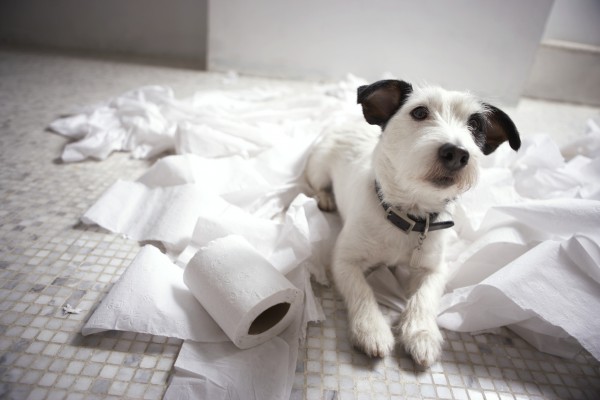
How to properly schedule adult dog walks? Before all you need to focus on the duration of digestion of food, in it averages 6-8 hours. The dog receives 2 meals a day, and it is desirable that this happen at the same time – at morning and evening hours, 6-8 hours before walking. If the pet begins to wake up the owner too early and demands to bring him to street, the diet should be adjusted.
Special signals make the task easier
If the pet is restrained, phlegmatic, and even experiencing a strong desire to urinate, does not betray him, you can resort to teaching him special characters. For example, dogs associate paddocks with their ammunition. And if you leave the collar, a leash or harness in the place where the dog has access, he will pay attention to them if necessary.
When training a puppy or teenage dog, you can choose a method “alarms”, in this case you need a bell, bells, a ring with strung bracing elements or another object, when touched, sounds are heard. It is suspended not far from the front door.
When going with your pet for a walk, you need to jingle every time by construction. The dogs are pretty smart, and in a few days the pet will be able to establish a connection between the sounds and the output to a walk. When the reflex is fixed, the dog will be himself – nose or paw touch the source of the ringing, urging the owner to the next promenade.
Owner who understands his dog from a half-view is large good luck for the pet, like a dog ready to serve his master faithfully –One of the best events in human life.


